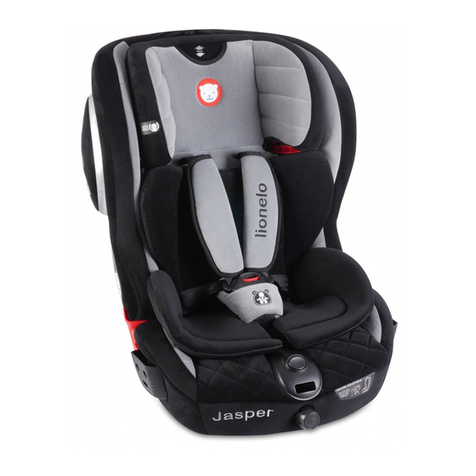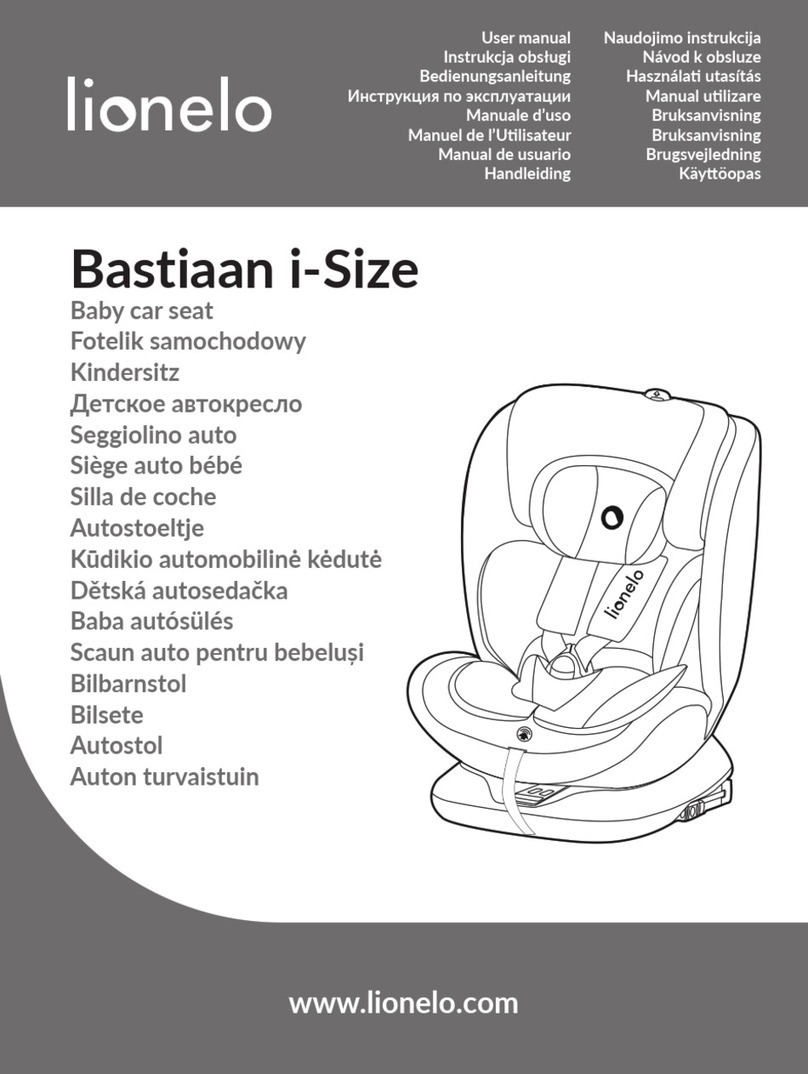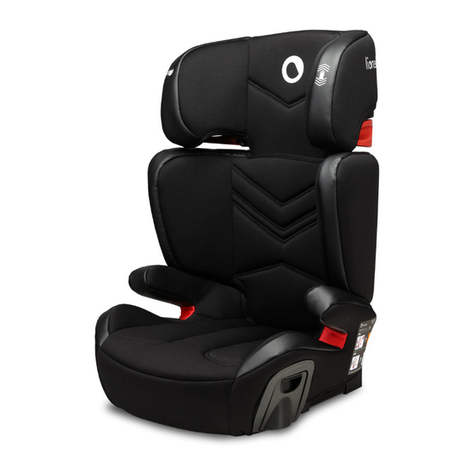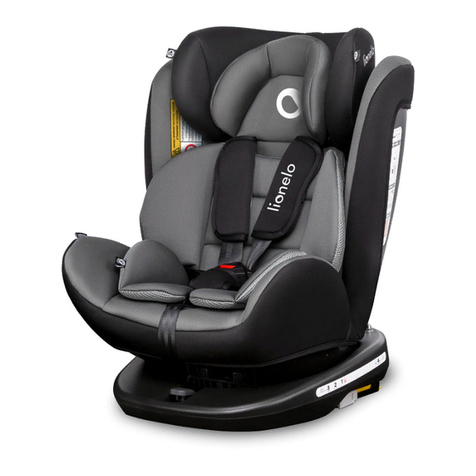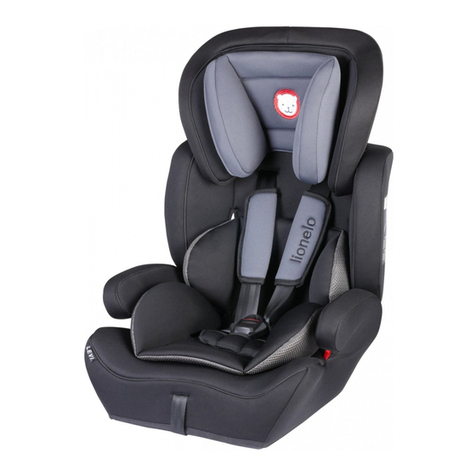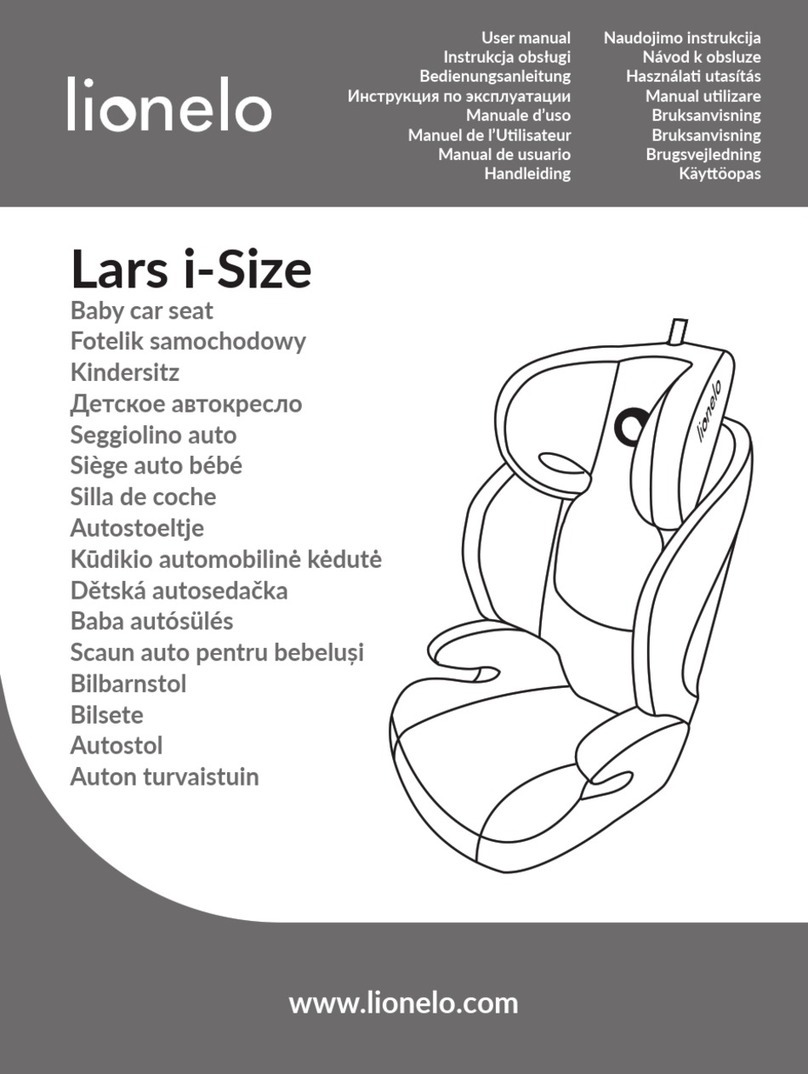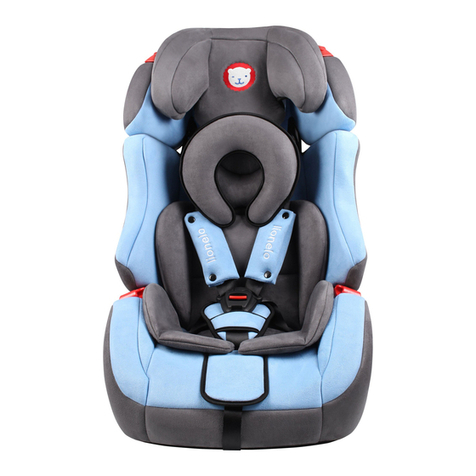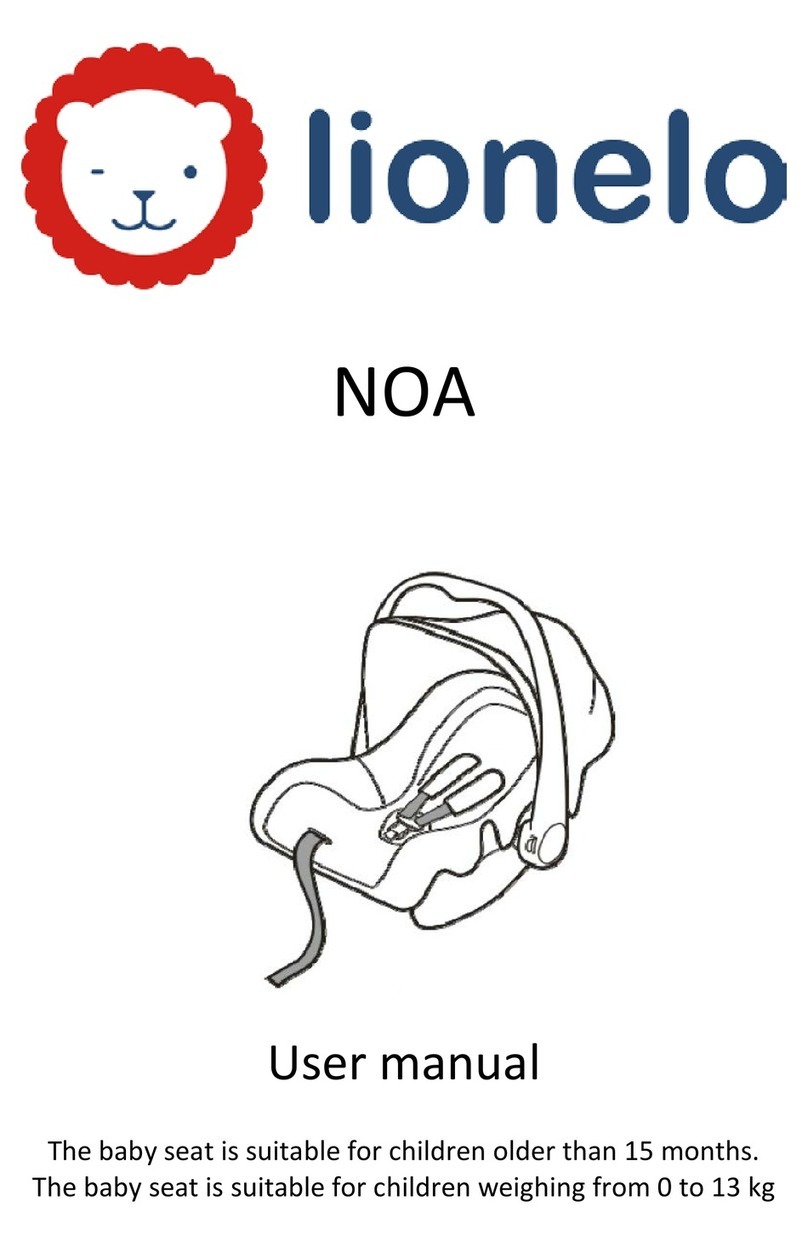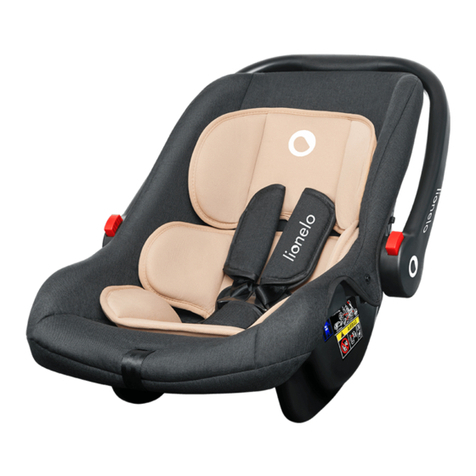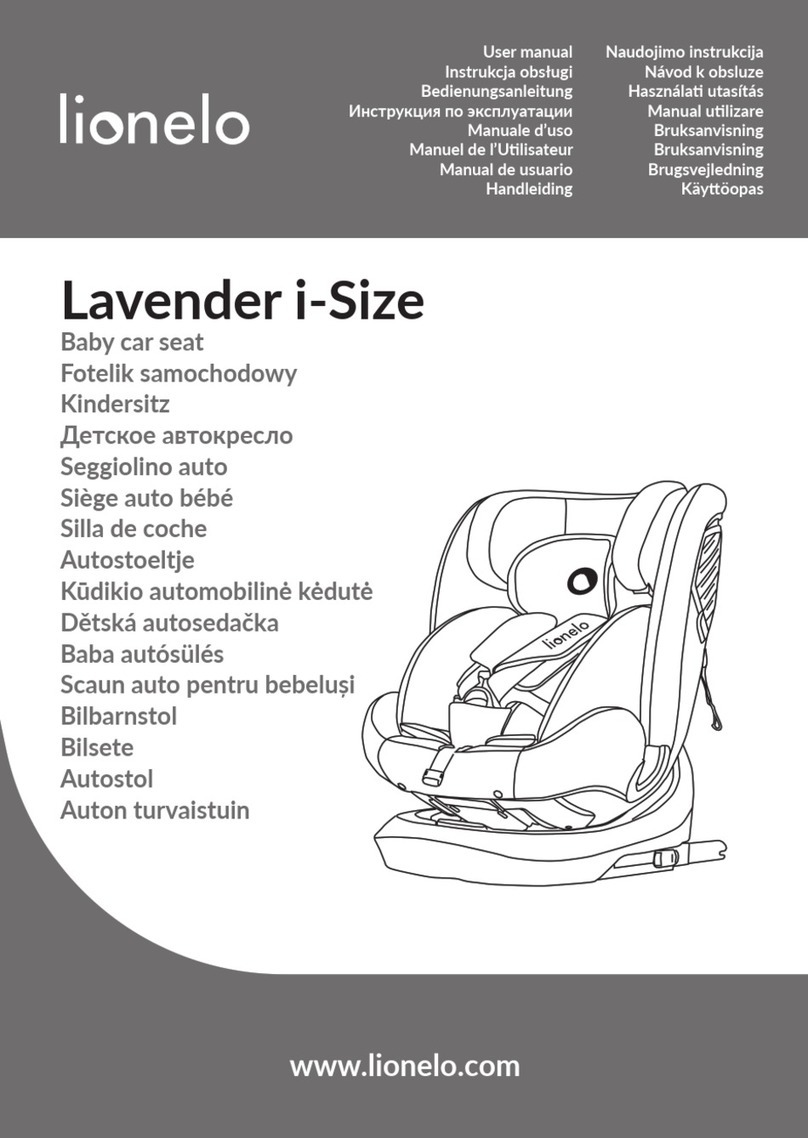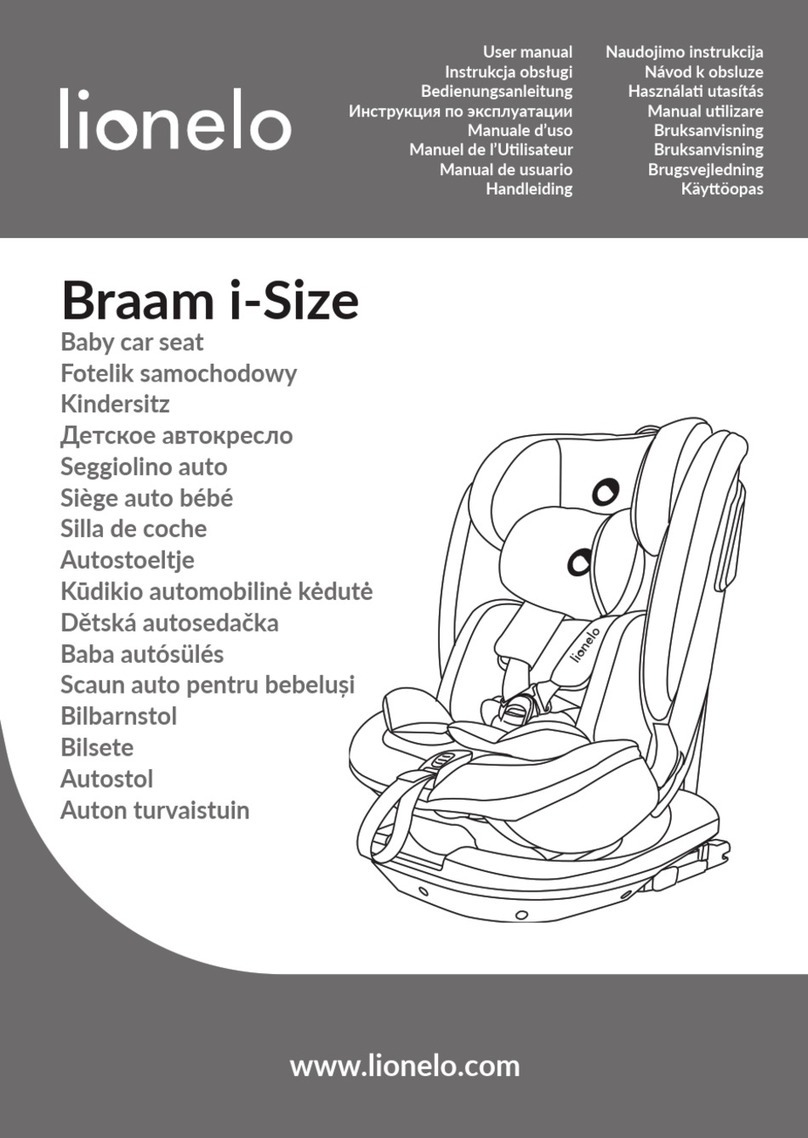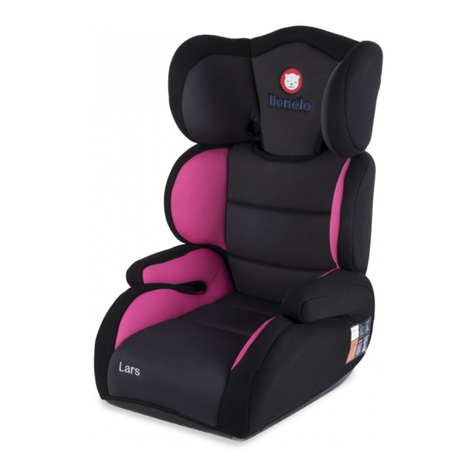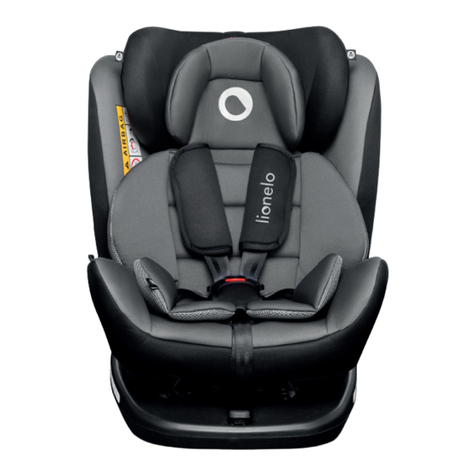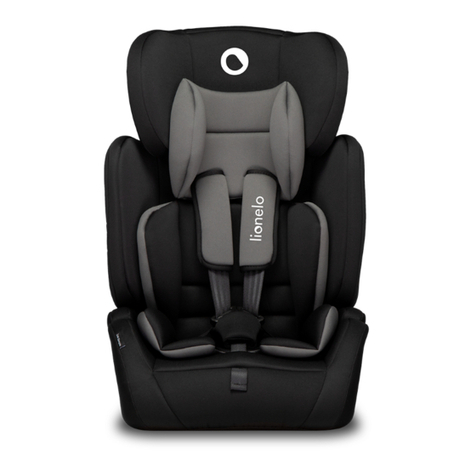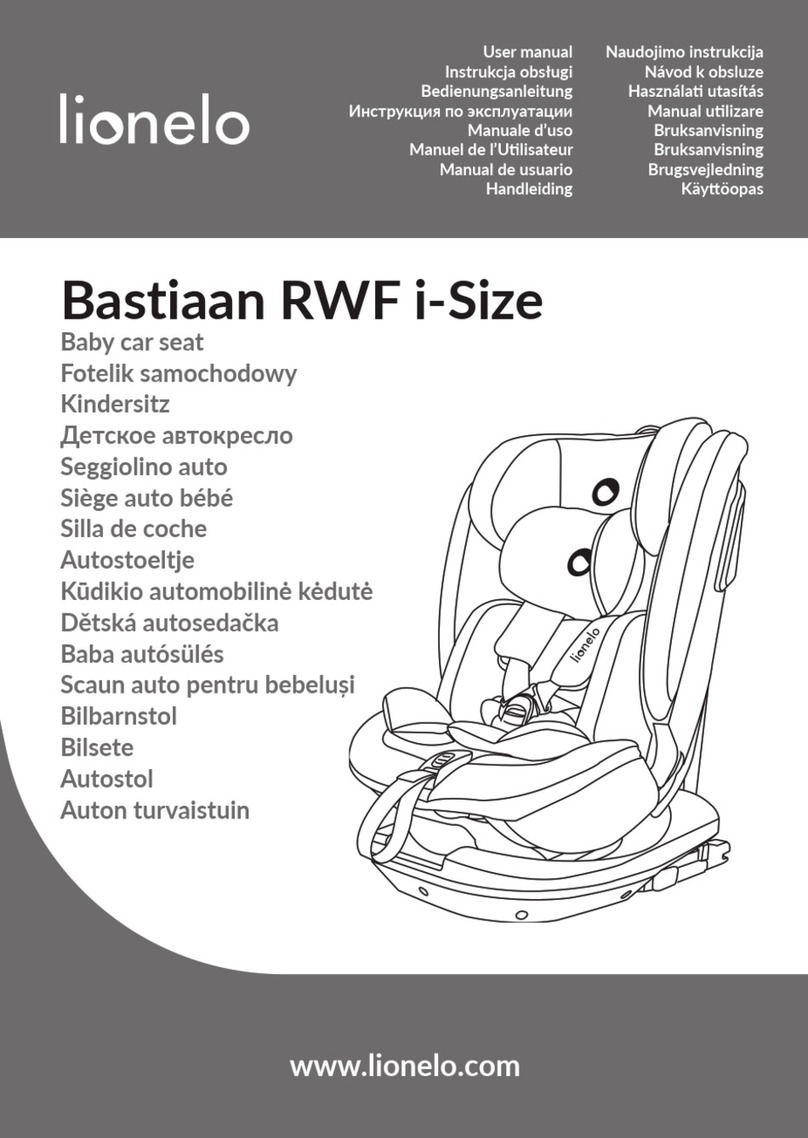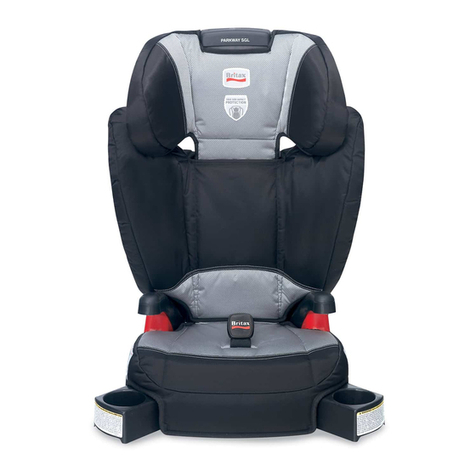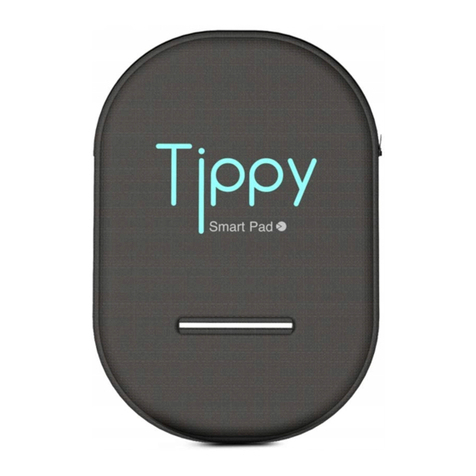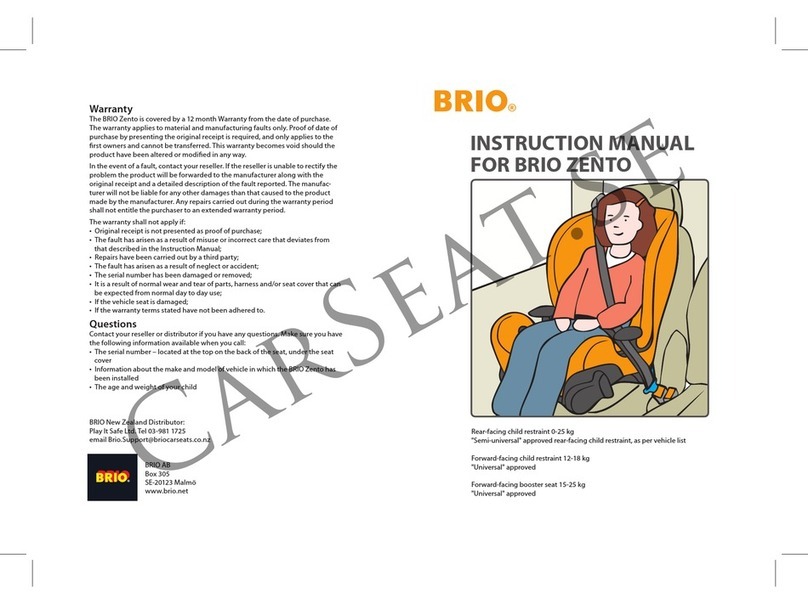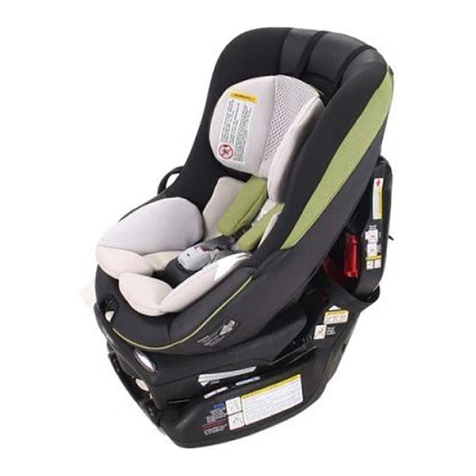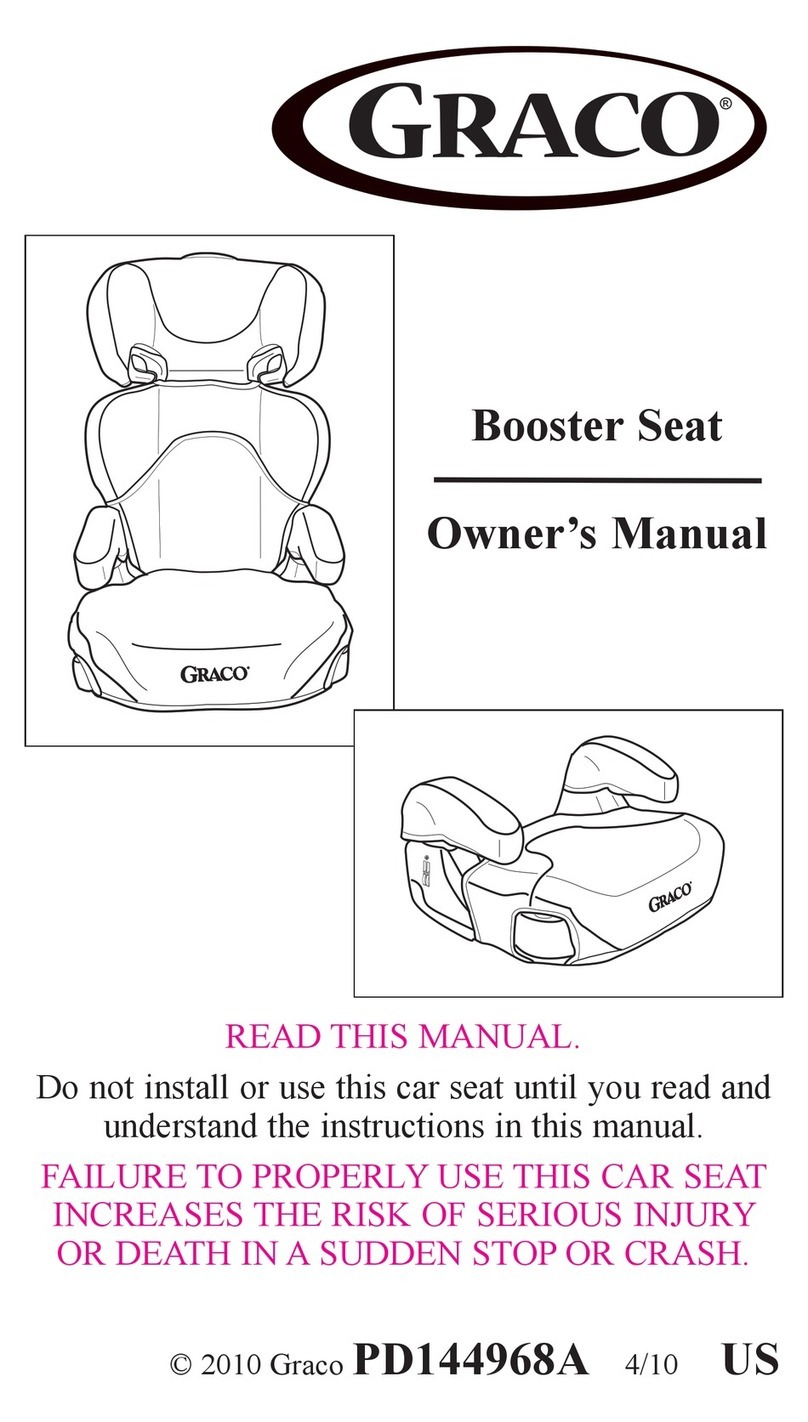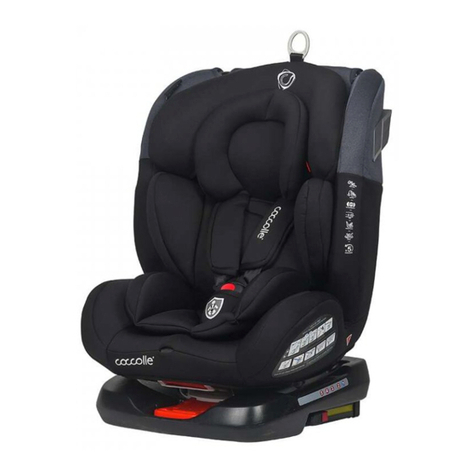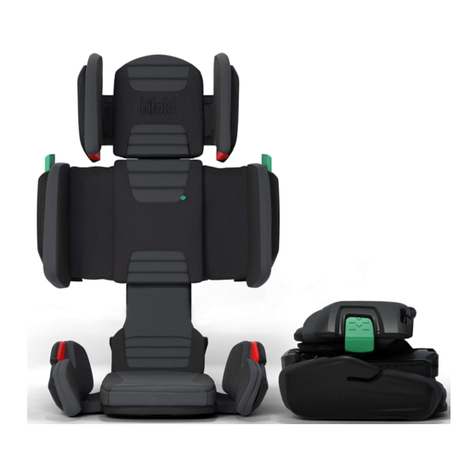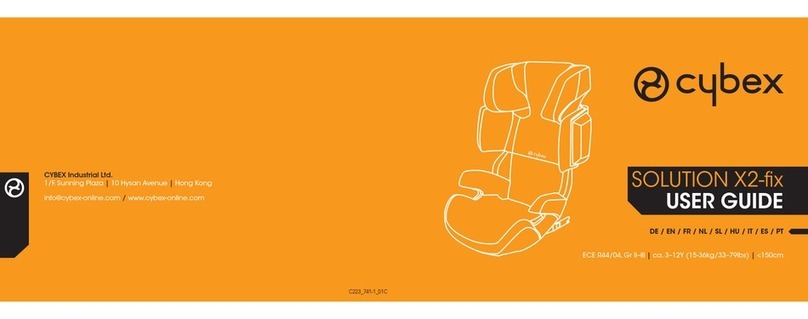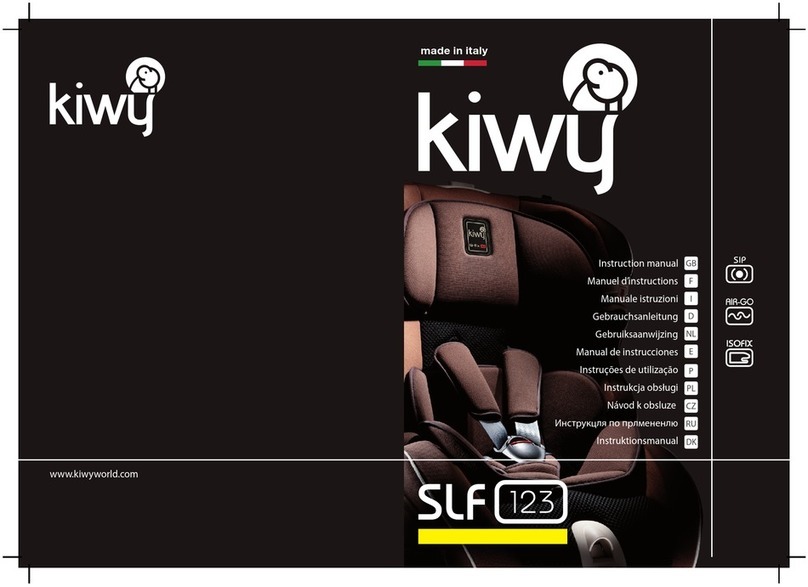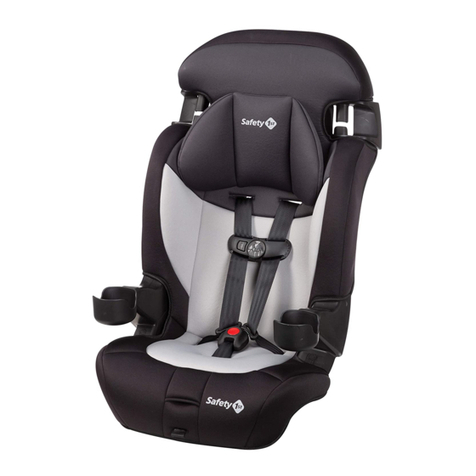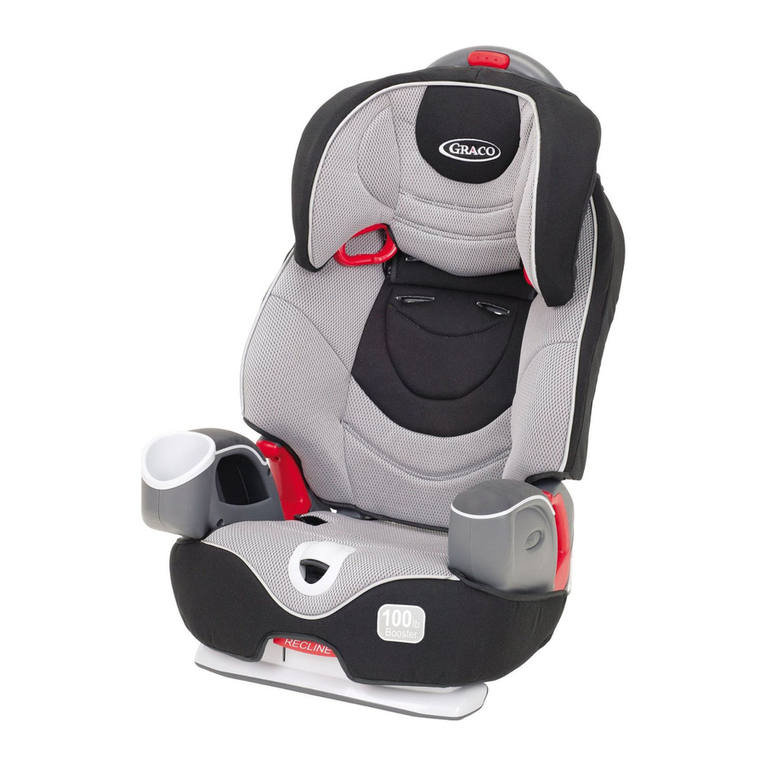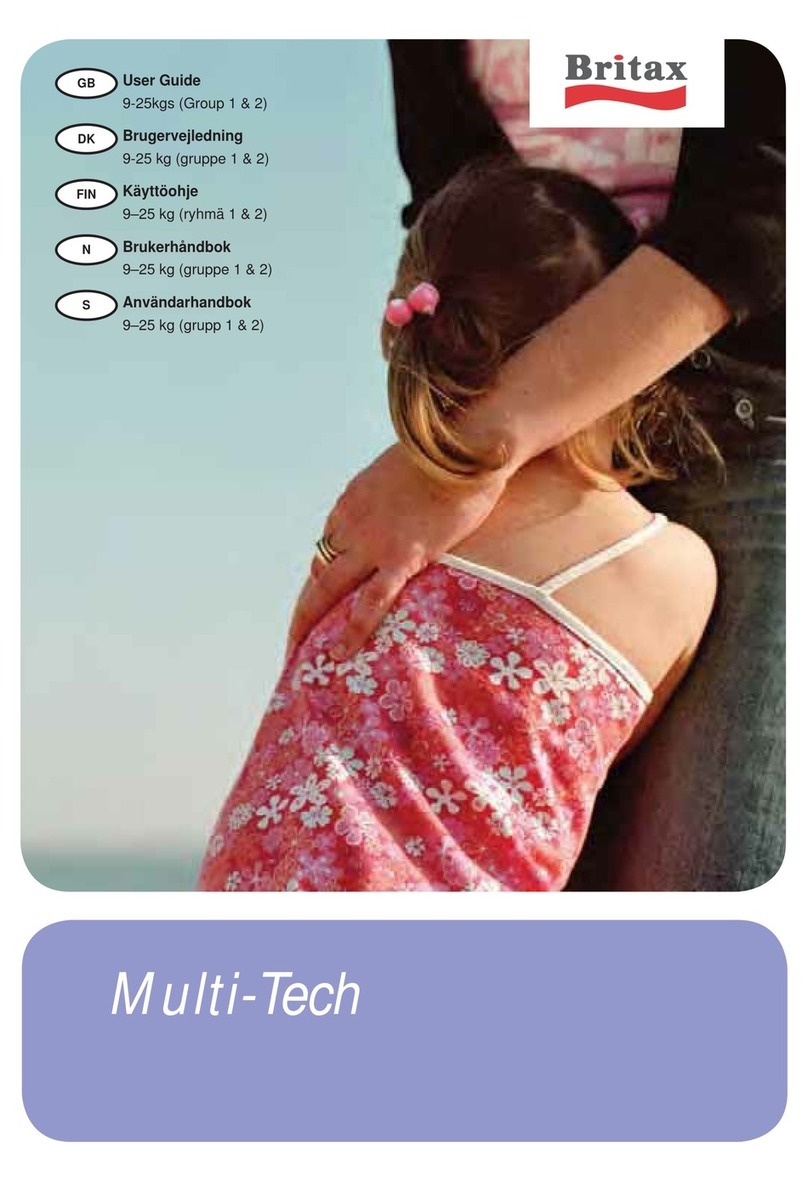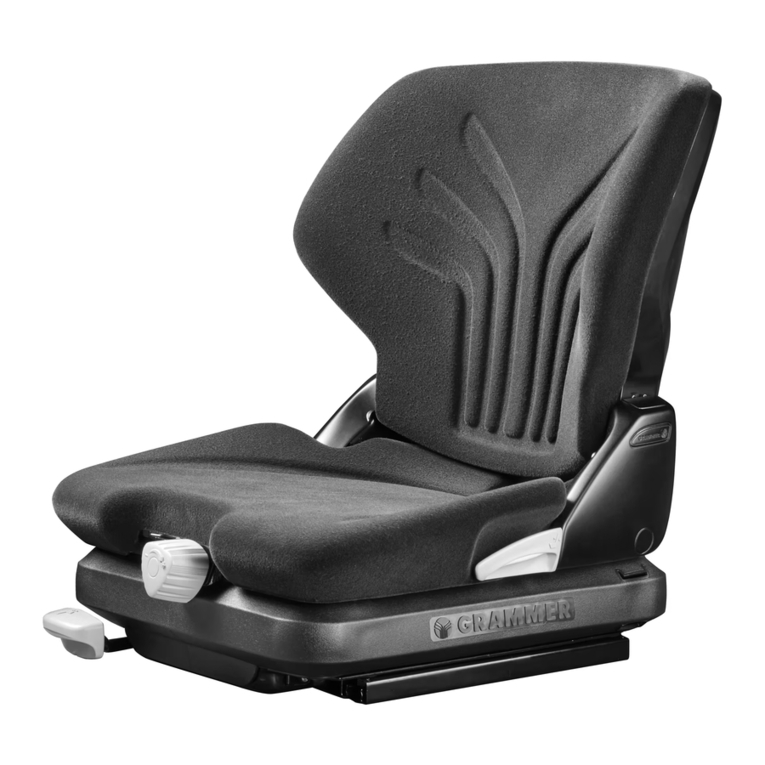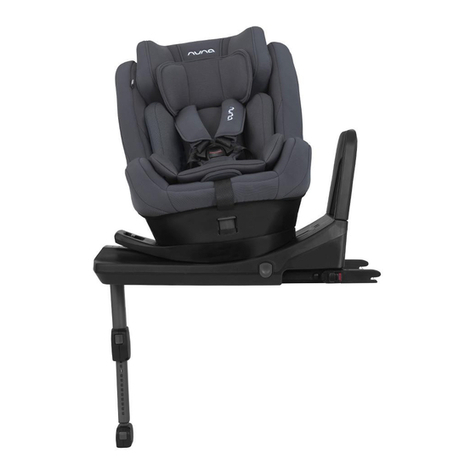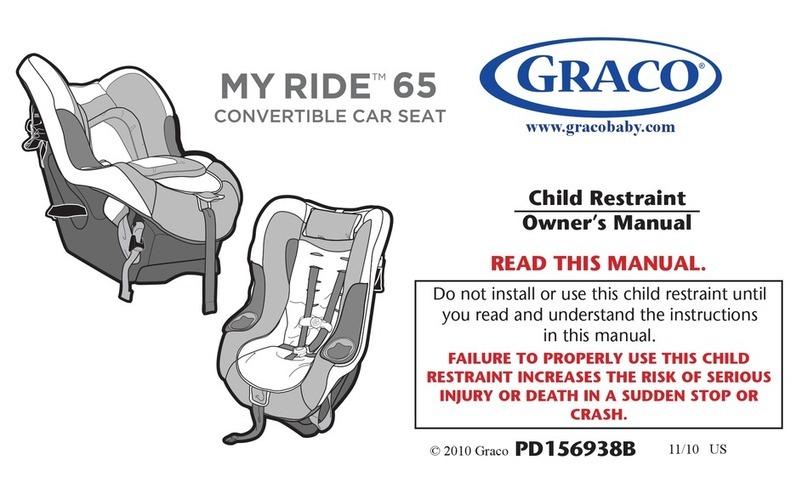
‑ 7 ‑ EN
Important
Please read this manual before use and keep for future reference. The manual
can help you assemble the child safety seat properly. A wrong assembly may
pose a threat to the child’s health. The manufacturer is not held responsible for
potenal hazards arising from wrong assembly of the product.
This child safety seat is intended for weight groups I, II and III, which means it
can be used by children whose weight ranges from 9 to 36 kg.
Weight group I: 9-18 kg,
Weight group II: 15-25 kg,
Weight group III: 22-36 kg.
• Hard elements and plasc parts of the child restraint system must be placed
and installed in a way that they do not get trapped by sliding seat or vehicle
door under regulaon condions of use.
•
All xing belts which aach the device to the vehicle must be ght, child xing
belts must be adapted to the child’s body and must not be twisted.
• Make sure the hip belts go low enough so that the pelvis is secured rmly.
•
If the product has been subject to sudden loads during the accident, replace it.
•
Do not alter the seat or install any addional elements without competent
authories’ approval. To provide your child with top safety, the product must be
mounted and used in accordance with guidelines in the manufacturer’s manual.
• Plasc components of this child safety seat may heat up in the sunlight and
cause the child’s skin to burn.
• Protect the child safety seat against sunlight. Otherwise the product may be
too hot for your child’s skin.
• Never leave the child in the child restraint system unaended.
• Luggage and other items which may cause bodily injuries in case of accident
should be secured properly.
• Do not use the product without upholstery. It is forbidden to replace the seat
upholstery with other than recommended by the manufacturer because it is
an integral part of the device and inuences its funconing.
• Keep the child safety seat manual when using the device. Store it in the car
in which you have installed the product.
